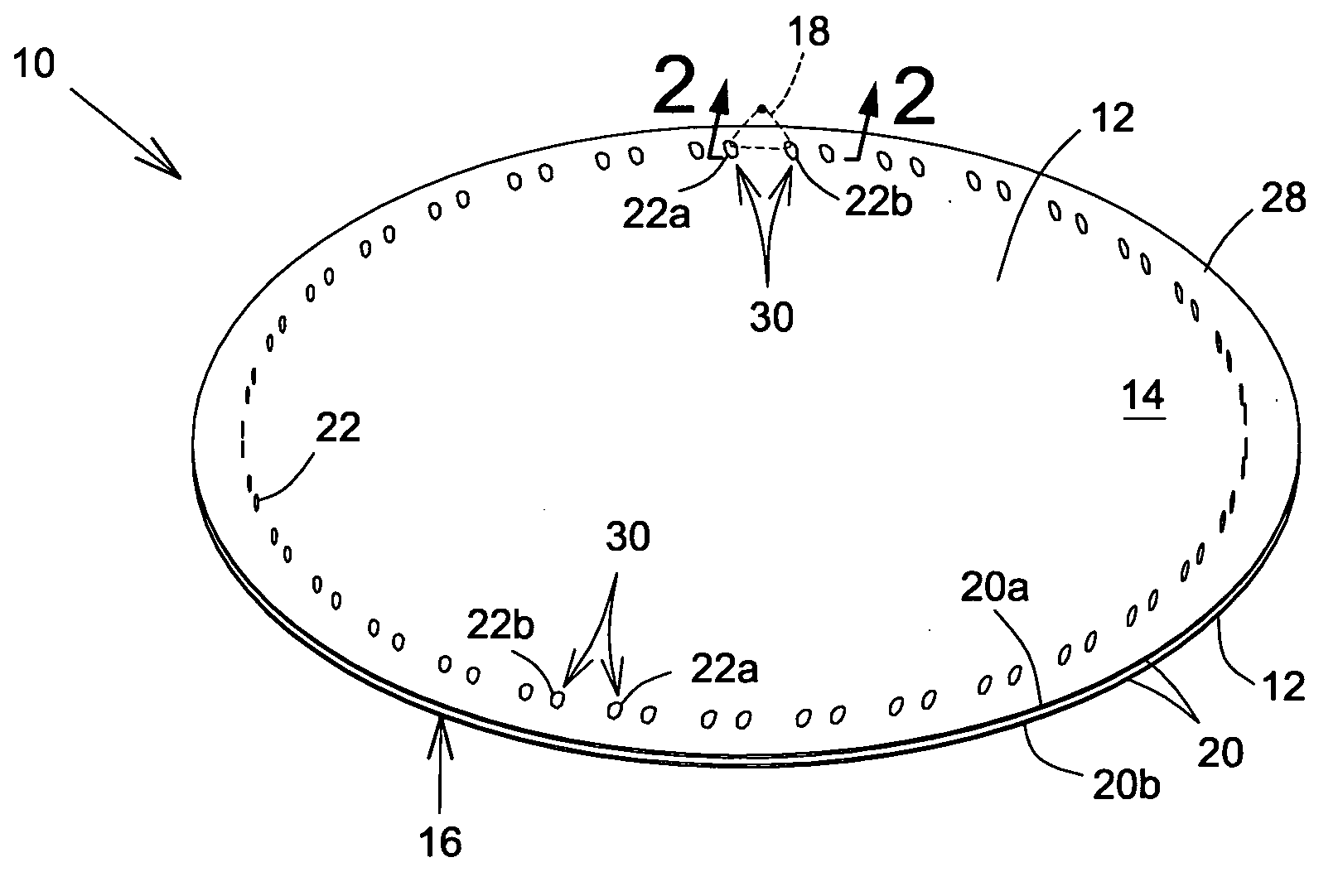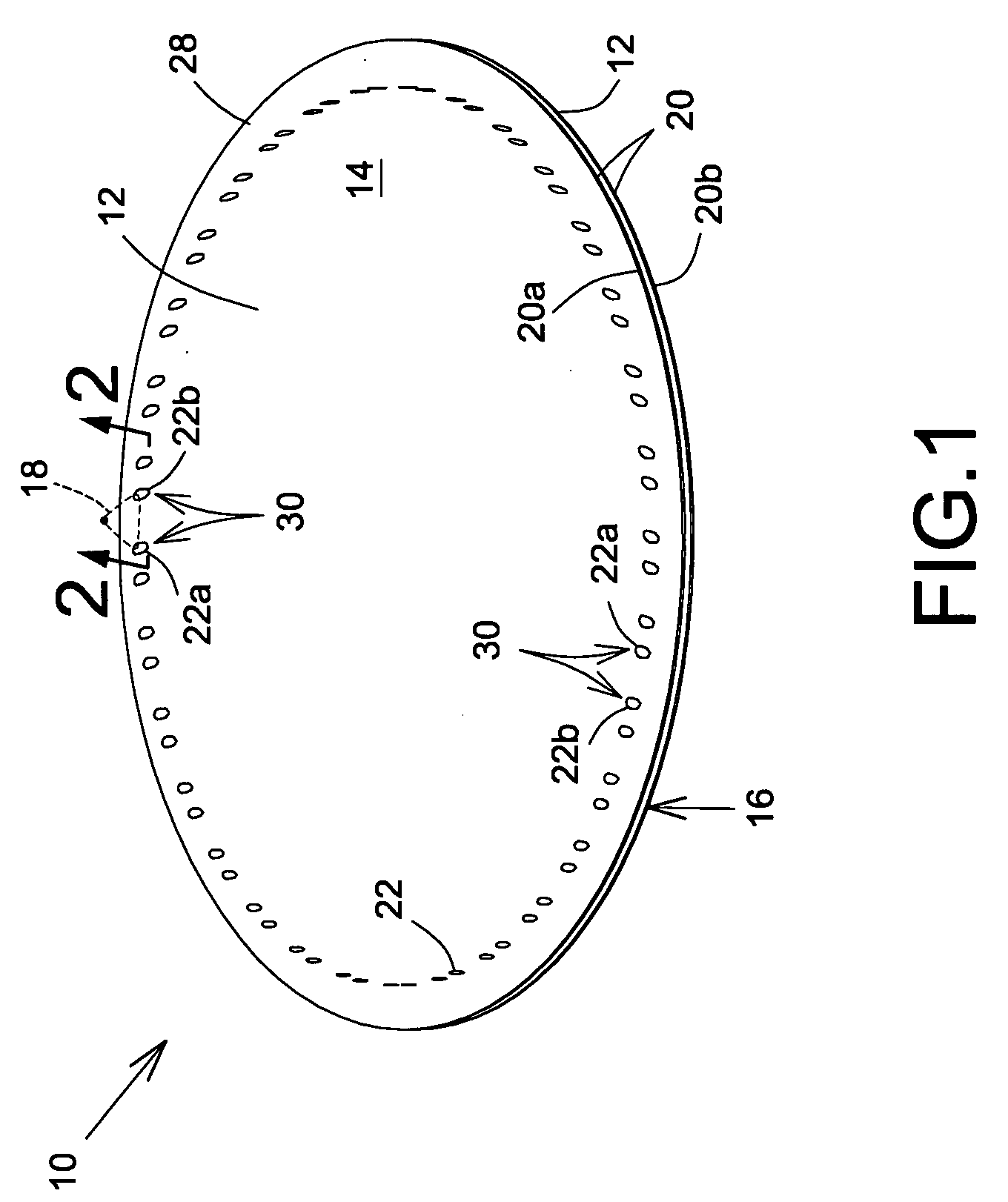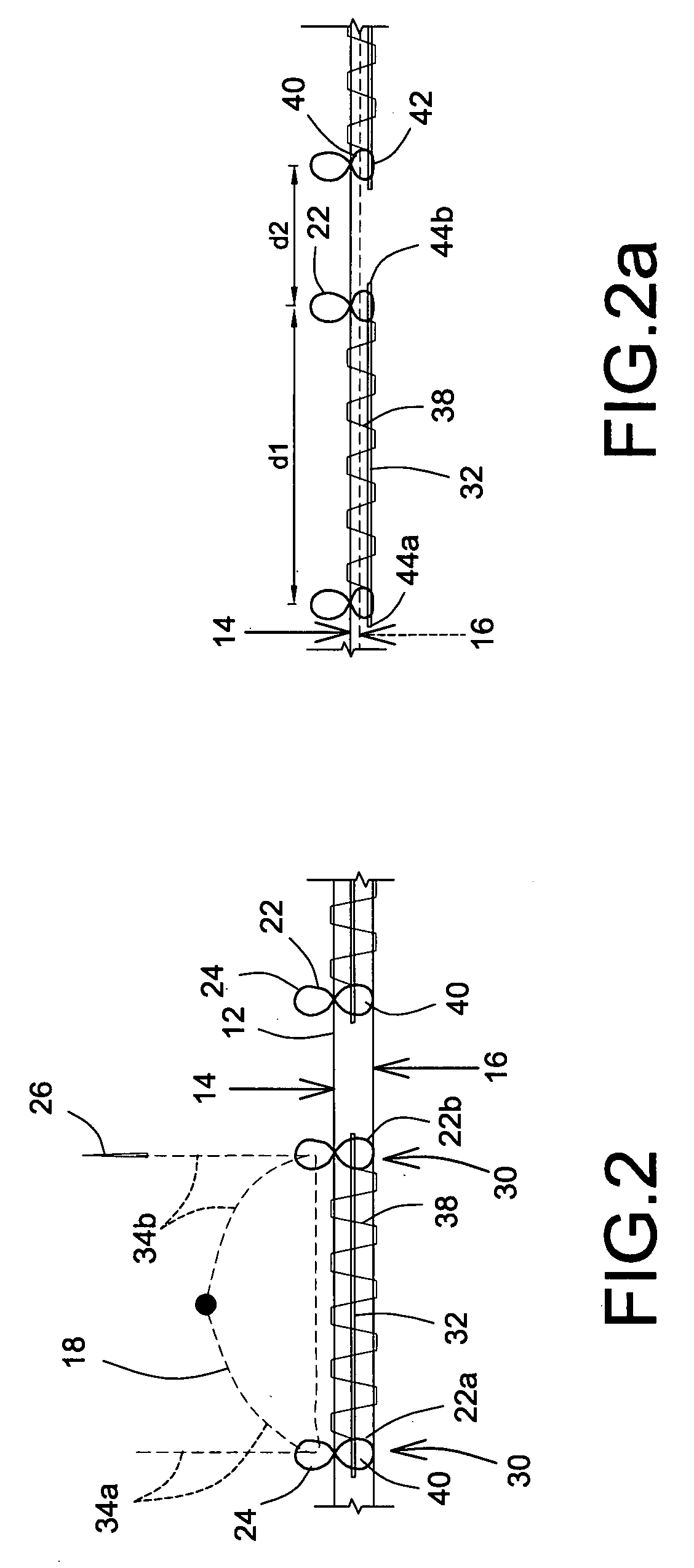Prosthetic repair patch with suture retaining structure
a technology of prosthetic repair and suture, applied in the field of prosthetic repair patches, can solve the problems of subjacent internal organs, potential damage of needles, surgical and post-surgical complications, and the risk of damage to subjacent internal organs, and achieve the effects of reducing the risk of infection, reducing the risk of hernia surrounding tissue or other subjacent internal tissue, and increasing the uniform and equal installation and attachment of the patch to the abdominal wall
- Summary
- Abstract
- Description
- Claims
- Application Information
AI Technical Summary
Benefits of technology
Problems solved by technology
Method used
Image
Examples
Embodiment Construction
[0026]With reference to the annexed drawings the preferred embodiments of the present invention will be herein described for indicative purpose and by no means as of limitation.
[0027]Reference is now made to FIGS. 1 and 2, which shows a prosthetic replacement patch, shown generally as 10, in accordance with an embodiment of the present invention for repairing an aperture, not shown, in surrounding biological tissue, not shown, of the abdominal wall of a patient. For the purposes of this description, it should be noted that the term aperture denotes any undesired aperture in biological tissue of a patient, including hernias, tears, punctures, and the like. However, the patch 10 described herein is ideally suited for repair of hernias, and ventral hernias in a particular, using an underlay repair surgical technique. It should also be noted that the term repair, with regard to apertures in the tissue, generally denotes, for the purposes of this description, the complete under covering ...
PUM
 Login to View More
Login to View More Abstract
Description
Claims
Application Information
 Login to View More
Login to View More - R&D
- Intellectual Property
- Life Sciences
- Materials
- Tech Scout
- Unparalleled Data Quality
- Higher Quality Content
- 60% Fewer Hallucinations
Browse by: Latest US Patents, China's latest patents, Technical Efficacy Thesaurus, Application Domain, Technology Topic, Popular Technical Reports.
© 2025 PatSnap. All rights reserved.Legal|Privacy policy|Modern Slavery Act Transparency Statement|Sitemap|About US| Contact US: help@patsnap.com



